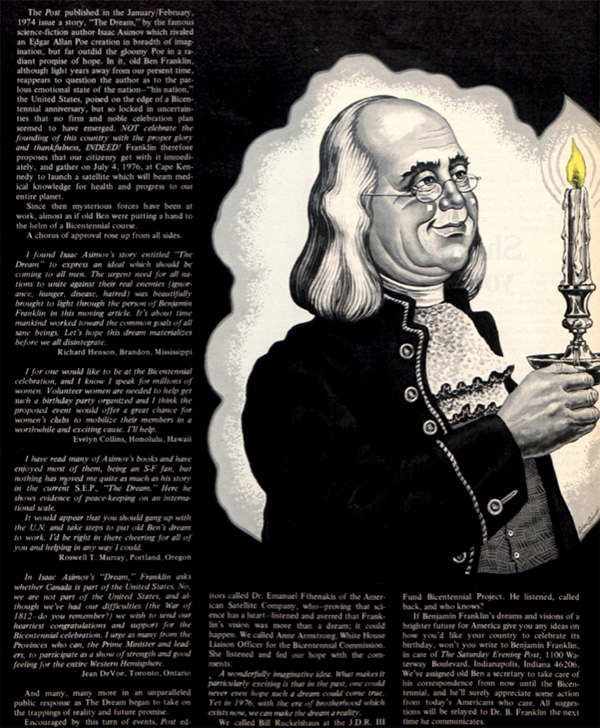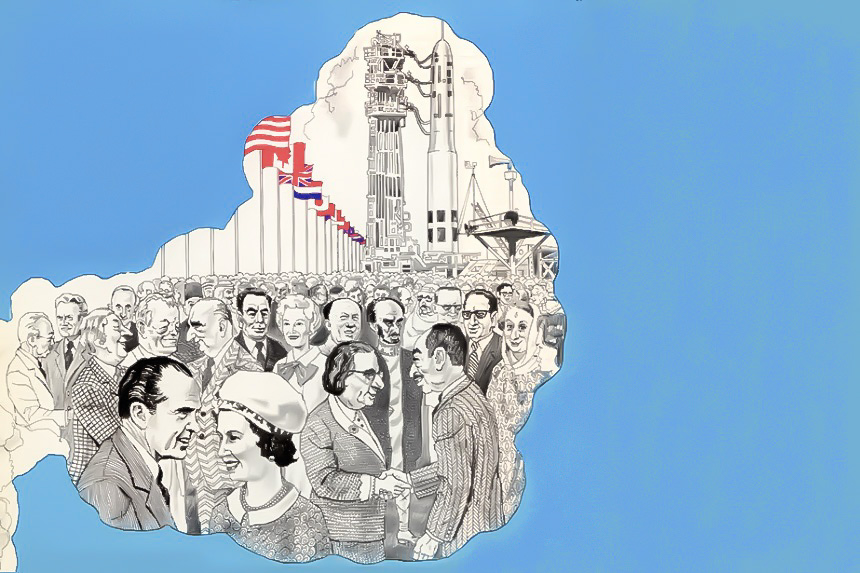Spanning time and space, the fictional worlds of scientist and prolific writer Isaac Asimov imagine alternative realities. Ones in which scientists and engineers resolve galactic struggles and robots walk among people.
Asimov also expressed concerns with the real world in his nonfiction writing, as in 1971 when he proposed — in this magazine — that the United States ought to make the long-overdue transition from its imperial system of measurement to the one utilized by most other nations. “Sanity is the metric system!” he railed, challenging his readers to attempt to memorize the convoluted conversions and calculations required to keep up the pigheaded American tradition of inches and pounds.
Today is the 100th anniversary of Asimov’s birth, and his writings display deep admiration, and tough love, for the country the Russian immigrant made his second home.
In addition to his arguments for reason in the way of official measurement and his musings on extraterrestrial life, Asimov imagined a series of conversations he might have with the founding father (and founder of The Saturday Evening Post) Benjamin Franklin. His most popular writings in the Post were a series in 1974 that depicted somnambulant run-ins with a ghostly Ben Franklin, starting with “The Dream.”
In Asimov’s story, Franklin is delighted to hear about the technological advancements of the modern era, and he excitedly learns the news that his nation is about to celebrate its bicentennial. Though the details of radio communication and television are difficult to conceive, Franklin is most bemused by his country’s failure to bring about world peace and unity amidst a time of unprecedented possibilities in travel and communication.
“My world seems like a science fiction world even to those of us who have lived through the recent years to reach the present,” Asimov tells the founding father. After explaining to Franklin the capabilities of space travel, satellites, and fossil fuels, Asimov also lets him in on the difficult prospects of nuclear war, gas shortages, and pollution. As in much of Asimov’s work, the tragic irony of looming catastrophe in an age of rapid advancement is all too real:
Franklin said, “You say, the, that every nation needs every other nation; for oil, or for metal, or for industrial experience and technological knowledge. You say that the oil supplies will soon be used up and that permanent new energy supplies must be found by nations working together. You say that failure to cooperate means the end of your technological civilization and the death of billions You say it all as though it were such apparent truth that it wearied you to have to explain it to me.”
In the final installment, Franklin gives his simple advice to Asimov on the message great writers must strive to express to avoid the end of civilization: “Unite or die.”
Asimov criticized American anti-intellectualism and widespread ignorance, but it is difficult to say exactly what the science fiction writer might think of the state of his country if he could see it on his 100th birthday. He would be quite surprised (or not at all) at the ubiquity of touchscreen technology and the prospects of artificial intelligence. Perhaps he would be disappointed in the failure of 21st-century people to unite in solving our climate crisis. But one thing is for sure: if Asimov could visit the United States today, he would be appalled to find that we are still stubbornly holding out on a shift to the metric system.

Featured image by Lucian Lupinski in The Saturday Evening Post, May 1974
Become a Saturday Evening Post member and enjoy unlimited access. Subscribe now



